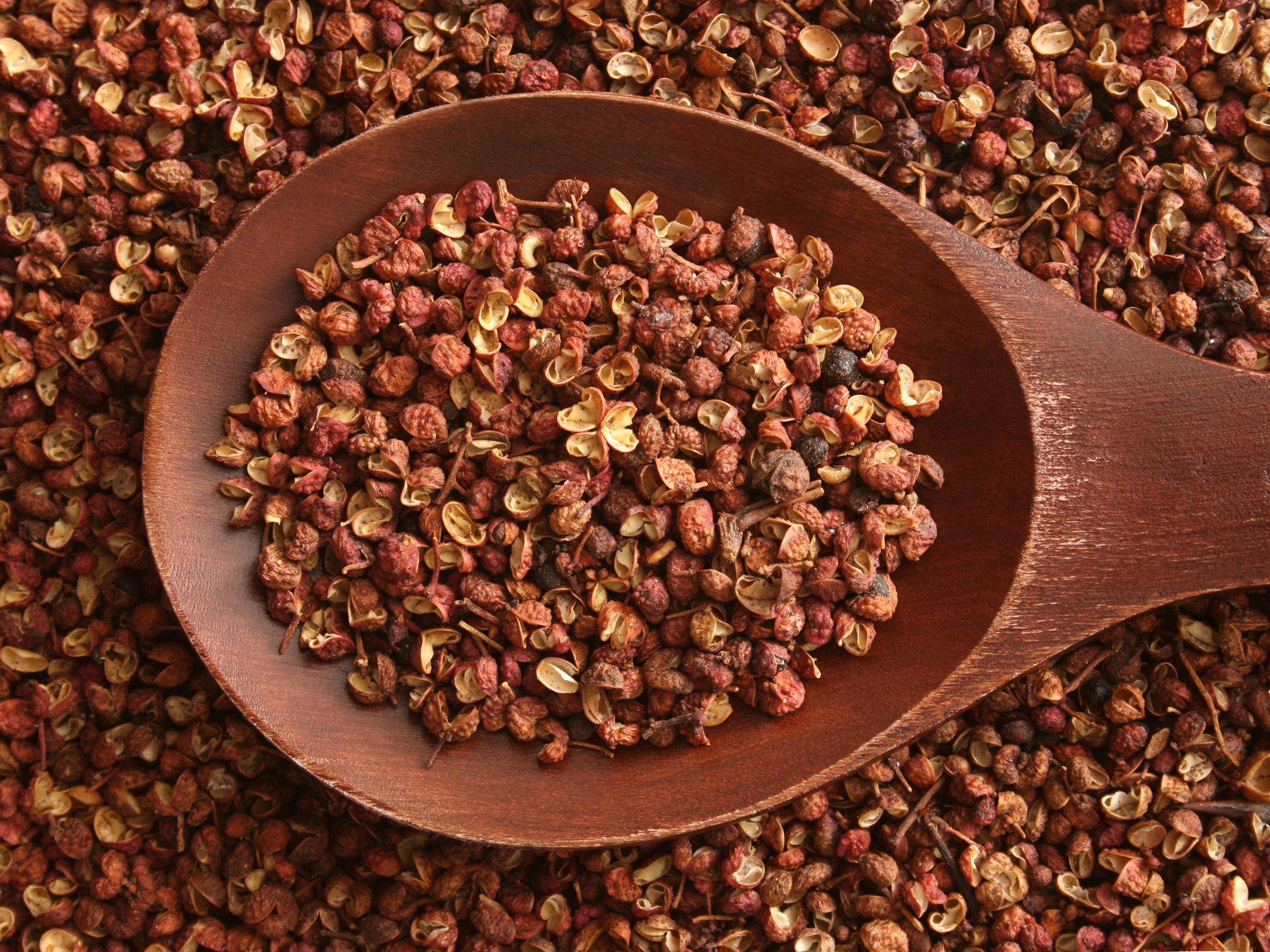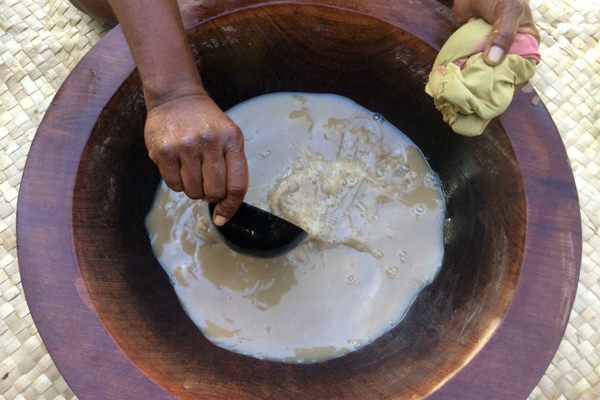A Tongue-Tingling Tour of Mouth-Numbing Spices
Is “electrifying” the sixth human taste?
THIS ARTICLE IS ADAPTED FROM THE JANUARY 7, 2023, EDITION OF GASTRO OBSCURA’S FAVORITE THINGS NEWSLETTER. YOU CAN SIGN UP HERE.
When I was 20, I spent a week in Chengdu, the capital of China’s Sichuan province and my grandparents’ hometown. On my first night, a group of friends took me to a restaurant where we dunked raw meat and vegetables in a fiery hot pot laced with the province’s famous Sichuan peppercorns.
For every red chile that set my throat alight, a peppercorn shielded me with an anesthetic, tingling sensation—imagine novocaine with a side of electric shock. My head buzzed for 15 minutes after the meal.
Since that trip, I’ve become an evangelist for Sichuan peppercorns. I offer the dried berries to my friends, tell them to chew, and watch their reaction: often, a curious scowl followed by raised eyebrows as a tangy vibration spreads through their mouths.
This sensation is caused by hydroxy-alpha-sanshool, a chemical that binds to touch receptors on the tongue, mouth, and skin, tricking cells into thinking they have been vibrating at a high frequency.
As much as my mother argues that everything was invented in China, cooks in plenty of other countries have long made delicious food with their own mouth-numbing spices. Relatives of the Sichuan peppercorn abound in Asia, Africa, and Latin America, and unrelated plants such as Brazilian jambú carry similar—and sometimes more intense—culinary and medicinal properties. In my opinion, they’re all grossly underappreciated.
This week, we’re looking at spices that will convince you that “tongue-tingling” deserves a seat at the table along with sweet, sour, salty, and bitter.
1. Jambú

A plant with button-size yellow flowers native to the Brazilian Amazon, jambú gets cooked in soups, infused in alcohol, and added to salads in Northern Brazil.
Its flowers and leaves contain spilanthol, a fatty acid similar in shape to hydroxy-alpha-sanshool, but with a more intense sensation that also causes the mouth to water. In the states of Amazonas and Pará, Indigenous healers use jambú to treat oral pain and toothaches, and cooks use the herb to add a tingly hit to tacacá, a sour prawn soup with chiles and wild cassava root.
In 2011, a bar owner in the city of Belém created cachaça jambú, a jambú sugarcane spirit that numbs the mouth as it intoxicates. With its trippy mouthfeel, the drink has become popular with kissers and partiers. At a concert featuring Dona Onete, an iconic Brazilian singer, organizers sprayed cachaça jambú into attendees’ mouths while she performed a famous song about jambú that repeats the phrase “it trembles,” celebrating the herb’s magical effect.
Where to Find It: the flowers of jambú, also known as “buzz buttons,” “Sichuan buttons,” “paracress,” and “electric daisies,” can be purchased online.
2. Clove
Your pumpkin spice latte won’t make your mouth numb, but in higher quantities, eugenol, the active scent compound in cloves, causes a numbing buzz similar to jambú and Sichuan peppercorns.
Chinese and Indian doctors have used cloves to alleviate pain for centuries, and (now banned in the United States) clove cigarettes once allowed smokers to take deep, anesthetized pulls. Today, some natural toothache remedies call for placing whole cloves against the teeth and crushing them to release their numbing oils over time.
Clove oil, with its high eugenol content, is a more powerful natural analgesic; drop some on your gums for a centuries-old buzz.
Where to Find It: Clove oil is sold as a natural remedy at many American drugstores.
3. Sichuan Peppercorn

My favorite numbing peppercorns are actually not peppercorns at all—they’re the dried berries of the prickly ash tree. Red and floral in their dried form, Sichuan peppercorns are a building block of Sichuan’s signature flavor profile, málà.
Má means “numbing” and là means “hot” in Mandarin, and in many dishes, má and là balance each other like ice and fire. In Sichuan, you’ll feel the má’s electric hum in everything from dan dan mian to mapo tofu to sweet, flaky pastries.
And while they taste great, they also have myriad uses in Chinese medicine, from anesthesia to virility: One variety, the gongjiao tribute pepper, was once grown solely for the fertility of emperors and their concubines.
Where to Find It: Sichuan peppercorns are available at most Chinese—and many Asian—grocery stores.
4. Sansho Pepper

Sansho, a milder, more citrus-y Japanese cousin of the Sichuan peppercorn, is commonly dried and mixed into spice blends throughout Japan before being sprinkled over dishes such as eel and yakitori.
While visiting a friend in Kyoto, I tried sansho cooked in its raw green form, simmered with soy sauce and dried sardines. The result was familiar yet new to my Sichuanese-American taste buds: chirimen sansho, a chewy snack that combined umami, sweet, salty, and sour with the beguiling buzz that I know and love.
Where to Find It: Dried sansho and chirimen sansho are both available online.
Gastro Obscura covers the world’s most wondrous food and drink.
Sign up for our regular newsletter.
















Follow us on Twitter to get the latest on the world's hidden wonders.
Like us on Facebook to get the latest on the world's hidden wonders.
Follow us on Twitter Like us on Facebook